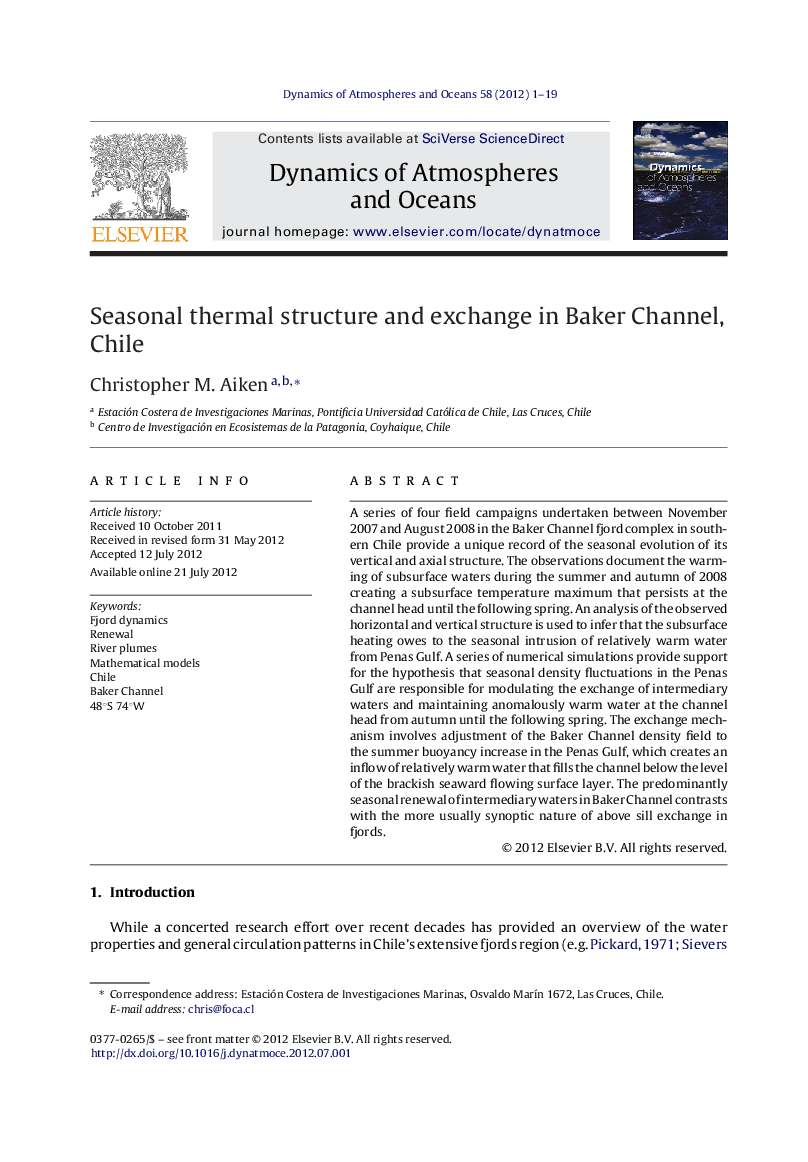| Article ID | Journal | Published Year | Pages | File Type |
|---|---|---|---|---|
| 6426549 | Dynamics of Atmospheres and Oceans | 2012 | 19 Pages |
A series of four field campaigns undertaken between November 2007 and August 2008 in the Baker Channel fjord complex in southern Chile provide a unique record of the seasonal evolution of its vertical and axial structure. The observations document the warming of subsurface waters during the summer and autumn of 2008 creating a subsurface temperature maximum that persists at the channel head until the following spring. An analysis of the observed horizontal and vertical structure is used to infer that the subsurface heating owes to the seasonal intrusion of relatively warm water from Penas Gulf. A series of numerical simulations provide support for the hypothesis that seasonal density fluctuations in the Penas Gulf are responsible for modulating the exchange of intermediary waters and maintaining anomalously warm water at the channel head from autumn until the following spring. The exchange mechanism involves adjustment of the Baker Channel density field to the summer buoyancy increase in the Penas Gulf, which creates an inflow of relatively warm water that fills the channel below the level of the brackish seaward flowing surface layer. The predominantly seasonal renewal of intermediary waters in Baker Channel contrasts with the more usually synoptic nature of above sill exchange in fjords.
⺠We present the first seasonal thermohaline observations in Baker Channel, Chile. ⺠Subsurface warming occurs at the channel head in autumn and persists until spring. ⺠The warming is inferred to involve horizontal advection of Penas Gulf waters. ⺠Numerical modelling confirms the role of seasonal forcing in driving exchange.
